Know About Sign Language
Origins of Hong Kong Sign Language;
With lip movements, facial expressions and body movements working together to express meaning, sign language has become one of the commonly used media of communication adopted by hearing-impaired groups. In different countries, local sign languages have evolved as a result of developments in social and cultural backgrounds. At present, hundreds of sign languages are in use in hearing-impaired communities around the world.
Hong Kong Sign Language is mainly derived from Chinese Sign Language. The sign language in China is divided into the variety used in the south, such as in Guangzhou; and that used in the north, such as in Beijing. In the 1950s some people from Shanghai started schools for hearing-impaired children in Hong Kong – the Overseas Chinese School for the Deaf and Hiu Chong School for the Deaf.
Since the handover, as more contacts are being made and closer ties forged between Hong Kong and the Mainland, Hong Kong Sign Language has become more heavily influenced by the sign language in the Mainland.
Varieties of Sign Language
This is the medium of communication being used by the majority of severe-to-profound hearing-impaired persons. All natural sign languages have a unique syntax, so that even though sign languages in different communities have their own conventional syntax rules, hearing-impaired communities in different localities can still communicate with each other through sign language because natural sign language is strongly pictographic and ideographic.
It is also known as grammatical sign language, and as Chinese Sign Language in Hong Kong. At the present school it is known as Sign-supported Chinese. It is a mode of communication used by hearing people in Hong Kong whereby speech and signs are used at the same time. The syntax used is similar to that of spoken Chinese.
It is variously known as the manual alphabet, spelling sign language, phonetic sign language, or writing through finger spelling in different countries. In some countries, words and phrases can be shown through the use of finger spelling. Borrowings from the American manual alphabet have been incorporated into Hong Kong Sign Language. However, as people in the streets do not know how to spell Cantonese, Chinese words and phrases cannot be finger-spelt.
Patterns in the Creation of Signs
 |
Aircraft |
 |
Boat |
2. Mimicry - Signs that imitate the movement or action of doing something, such as "Take a picture", "Eat "
 |
Take a picture |
 |
吃飯 |
3. Iconicity - Signs that borrow the shapes of Chinese characters, such as "People", "Workers", "King"
 |
People (Chinese:人) |
 |
Workers (Chinese:工) |
 |
King (Chinese:王) |
4. Metaphor - Signs that represent ideas or concepts, for example, "Learning", "Forget"
 |
Learning |
.jpg) |
Forget |
“Which hands to use when signing
When we sign, we tent to use the dominant hand, that is, the hand used for writing and holding chopsticks, particularly when the sign is a single-handed sign. When some signs call for the use of both hands, as in the case of two-handed signs, the dominant hand is active, while the other hand, the base hand, is passive or motionless.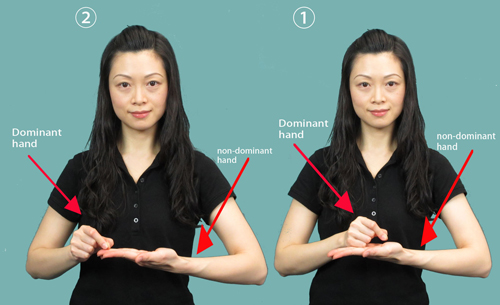 |
Things to note about signing
 |
Aromatic |
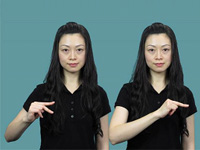 |
Swimming |
 |
Pleased |
 |
Elated |
 |
Exasperated |
 |
Angry |
 |
Love |
 |
Rest |
 |
One week |
 |
Silence |
 |
I helped you |
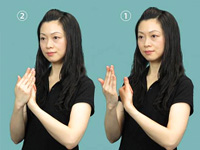 |
You helped me |
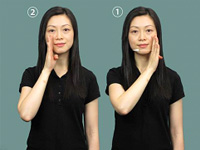 |
Shopping mall |
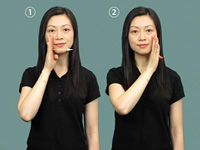 |
Gossip |
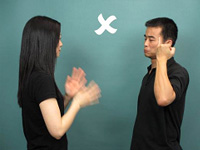 |
 |
 |
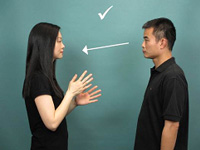 |
Copyright © 2013 - 2015 Sign Assisted Instruction Programme. All rights reserved.